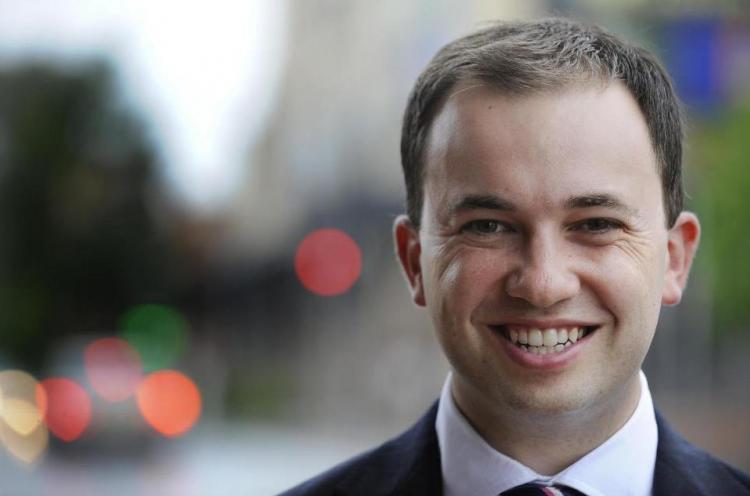
Mr MATT KEAN (Hornsby) [4.04 p.m.]: There are times when we have an opportunity to do something extraordinary and decide what kind of world our children will grow up in. This is one of those opportunities. If we want to build a better world, leave this nation a better place than we found it and see our children live in a safe, clean environment it is the decisions of today that will determine tomorrow.
Today I speak in favour of one of those decisions: the decision to protect a special part of Sydney and a special part of our environment in perpetuity. The National Parks and Wildlife Amendment (Adjustment of Areas) Bill 2012 is close to my heart as it seeks to give the outstanding conservation values of the Berowra Valley the protection they deserve by creating the Berowra Valley National Park.
Berowra Valley Regional Park is a special place within the Sydney Basin landscape. It is an area of great natural and cultural heritage importance and, being around 20 kilometres north-west of the Sydney central business district, it is right on this great city's doorstep. The park covers approximately 3,884 hectares. It was managed by Hornsby council before being reserved under the National Parks and Wildlife Act in 1998. Since then, the National Parks and Wildlife Service and the council have worked collaboratively to manage the park and provide high-quality facilities for the community. This occurred first through joint representation on the Berowra Valley Regional Park Trust, and more recently through shared management arrangements. Berowra Valley not only is rich in biodiversity but also contributes to the quality of living in Hornsby shire—known to many as the "Bushland Shire".
In my inaugural speech I spoke about the remarkable characteristics of our bushland. Many people from all over the world have chosen to call our shire home because of its wonderful character and amenity that we have fought hard to preserve. I am delighted that this Government will achieve the protection of Berowra Valley in a new national park. There are many people within the Hornsby community who will welcome and applaud this move. I have had representations from and conversations with locals about the need to give this area the protection it rightly deserves as a national park. In this regard, I acknowledge and thank the Hornsby Conservation Society, whose commitment and love of this special area knows no bounds. The leadership of Dr Richard Mason, Pat Pike, Daphne Gordon and Gordon Limburg has made this possible. I also thank the Friends of Berowra Valley Regional Park for the work they have done to protect our park.
Although there are so many people who have fought to make this dream a reality, it is appropriate that I signal out a few special champions. Gordon Edgecombe was one of the bushwalkers and conservationists who first recognised the unique values of the Berowra Valley. As some of the original trustees of the Elouera Bushland National Park, Gordon and his wife, Jean, devoted much of their lives to protecting, improving and enlarging it. Dr Joyce Vickery was a dedicated conservationist and botanist who had a deep love for the Elouera Bushland Reserve. She described the area as a sanctuary that is unique and of great interest to scientists all over the world. In 1967 the late Dr Vickery donated more than 100 acres of privately owned land in the Hornsby Valley for inclusion in the Elouera Bushland National Park—a gift for which posterity will be extremely grateful.
Jamie Slaven started the Friends of Berowra Valley. The organisation has fought to protect this unique part of Sydney and we are indebted to the efforts of all involved. I acknowledge the efforts of fellow members Jean and Lyn Bolton, who have been indefatigable in their efforts. Known to many of us in this House, the Hon. Max Ruddock was the inaugural president of the Elouera Bushland National Park Trust in 1964 and he had a great affection for the park. His son and my great friend Philip Ruddock has been a keen advocate for this amendment. I thank him for his continued support and interest. Max was followed in his position by Jim Mitchell, who devoted much time and effort to the cause and pulled many people together from different political backgrounds and areas of Sydney for the common cause. Of course, today's event reflects the efforts of countless people who have fought to protect and enrich this special part of Sydney.
I acknowledge on the public record the significant efforts of Geoff Dowsett, Dr Pat Selkirk, Ken Blade, Malcolm Bruce, George Elliott, Nancy and Robert Pallin, Jacqui Gibbs, Jenifer Lewis, Norma Searle, Dr Don Adamson, Robin Buchanan, Anne and Ray Williams, Ross Doig, Carole and Robin Ford, Val Williams, George Foster, Alison Downing and John Read. This event would not have occurred without the contributions of each of these people over many years. But there is one person who must be singled out for special mention. His effort to preserve this very special part of Sydney stands alone. Sixty years ago Bob Salt found this beautiful part of the world and set about fighting to protect it for future generations to enjoy. Bob has lobbied, fought, harassed and made this possible. He has been a wonderful advocate for this remarkable and special part of Sydney. Future generations will owe Bob a great debt. I know our community certainly does.
I acknowledge all the traditional owners of the Berowra Valley. Berowra Creek, which runs through the park, is thought to have been the natural boundary between the lands of the Guringai people in the east and the Darug people in the west. The park contains 24 known sites of Aboriginal heritage. The majority of these sites are located to the southern and northern boundaries of the park in valleys, caves and open rock platforms. They include axe grinding grooves, art such as hand stencils and middens. In recognition of the rich Aboriginal history of the park, I am pleased to announce that the Government has commenced a process of consultation to identify a suitable local Aboriginal name for the purpose of renaming the park with a new dual name. I note in the presence of the Minister for the Environment that we have had many submissions on this matter.
The park has rich biodiversity values, which is remarkable considering its location within the highly developed Sydney Basin. I live in a unit block, and five minutes' walk away you would not know where you are: You are literally in the middle of a remarkable piece of bushland—it is just extraordinary. The park has national, regional and local conservation significance. Extensive areas of woodland, open forest, rainforest, mangroves, heath, saltmarsh and sandstone swamps are present within the park. The rich diversity of high-quality habitats in the park support many native animal species, including 12 threatened species such as the spotted quoll, giant burrowing frog and powerful owl. This morning when I went on my morning run there was an echidna coming across the road on the bushwalking track in the middle of what will be the Berowra Valley National Park. It is a very special part of Sydney. This Government recognises both the close connection of the people of Hornsby shire to the natural environment of the Berowra Valley and its incredible conservation values through its efforts to increase the protection of this area by creating the Berowra Valley National Park.
One might ask why it is not sufficient to retain these lands as Berowra Valley Regional Park. The answer is that a regional park does give some protection, usually to lands that are more modified, and are suitable for public recreation and enjoyment. This area, however, is largely not modified and has considerable conservation values that warrant its protection as a national park. But let us not forget about the social and recreational importance of the park. Public access in the regional park has been promoted and well managed for many years, with investment in camping facilities, bike paths and picnic areas, which make it such a popular place to visit.
The regional park, which is surrounded by urban development, is used by the public on a daily basis for pursuits such as exercise, nature appreciation and dog walking, or simply to relax in the beautiful bushland setting. The park is extremely popular on weekends for picnics, bushwalks and camping. The Great North Walk, which I am sure many members will be aware of, extends from Lane Cove in the south all the way to Newcastle in the north—it runs right through the middle of the park. The Government also recognises the need to maintain and provide for existing recreational activities that were occurring when the regional park was created back in 1998 and which have continued. One of those activities is dog walking. I am pleased to advise that dog walking will continue in areas in which dog walking currently occurs, with specified trails maintained in the regional park. [Extension of time agreed to.]
There is also community interest in the use of a modified area within the park, known as Stringybark Ridge. It is an area of approximately three hectares, which was used previously by the Hornsby Pony Club. This area will be included within the new national park. Options for the use of this site, including active use of the area, will be investigated. Council and the broader community will be part of the standard management and planning for a national park. This Government is striking a balance between the conservation and recreational needs of the Berowra Valley area with the creation of the new Berowra Valley National Park, and the retention of the small Berowra Valley Regional Park. A new plan of management will be required for Berowra Valley National Park and Berowra Valley Regional Park.
The development of plans of management is a process that is undertaken with full community engagement. The community will be able to have their say on plans for the future management of these lands, and the best way for them to enjoy them. The establishment of Berowra Valley National Park will achieve a win-win for the environment and the local community. There will be better recognition and protection of our natural and cultural heritage, and continued provision of recreational activities in the areas that will remain regional park. I take this opportunity to place on the record my deep sense of appreciation to those elected representatives that have fought to make this vision a reality. This battle has not just come about today; it has been going on for 60 years.
I particularly acknowledge the work of my predecessor, Judy Hopwood, who was passionate in fighting for this parcel of land to become a national park. I was absolutely honoured to take up the baton following my election in March 2011 and turn Judy's vision, Max Ruddock's vision and the community's vision into reality. But that did not happen by accident. It happened because we have a Minister for the Environment who listened to my concerns and listened to the community's concerns, and who is passionate about the environment and preserving something remarkable for future generations to enjoy. Those generations will thank the Minister and I appreciate all her efforts to date. I am absolutely thrilled to support this bill. Just over one year ago I stood in this place and made my inaugural speech. In that speech I spoke of my hope and a vision for a better State and committed myself to turning that into a reality. Today, I hope this bill goes some way to achieving that goal.
Read the full transcript in Hansard here.
